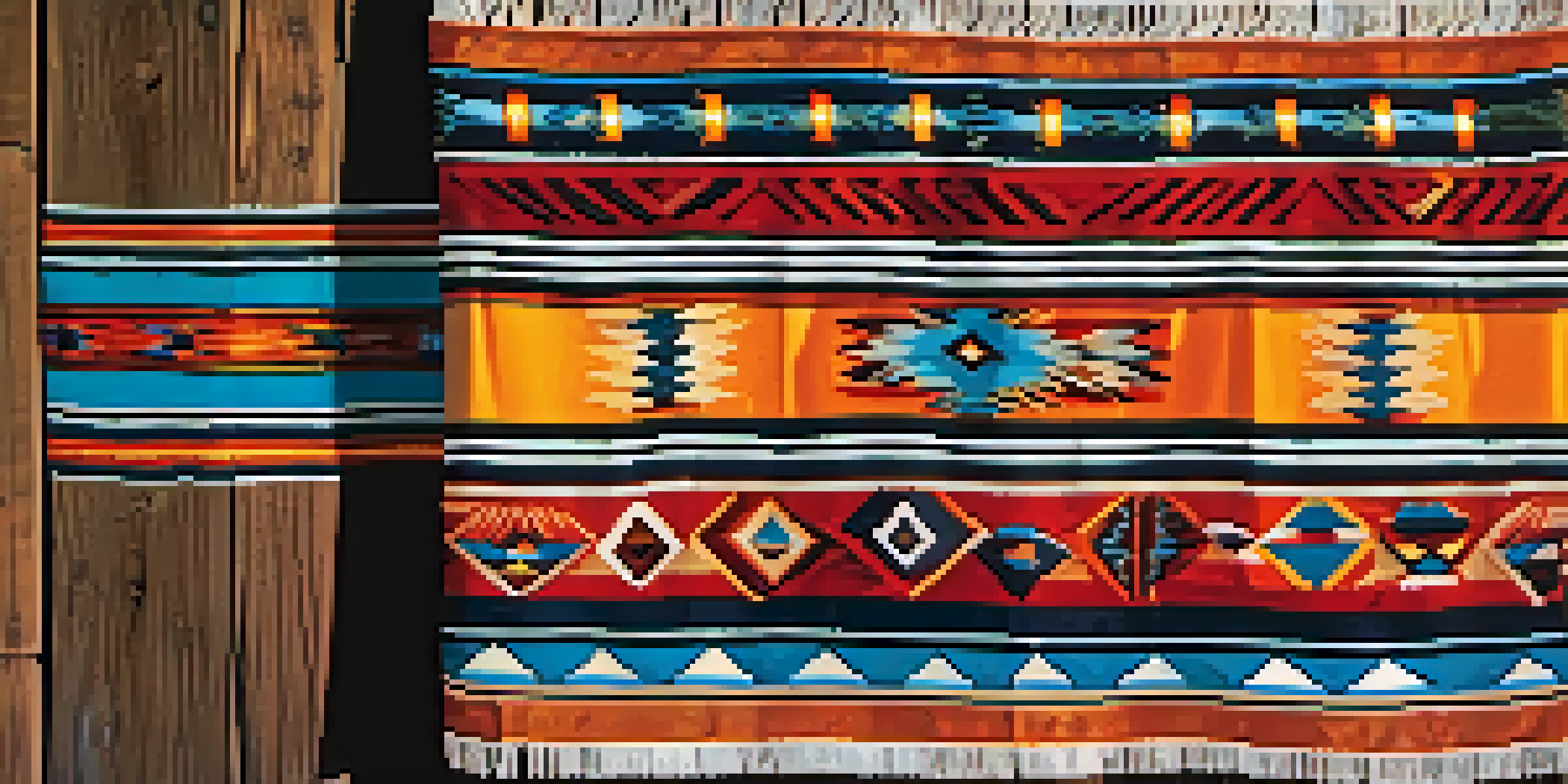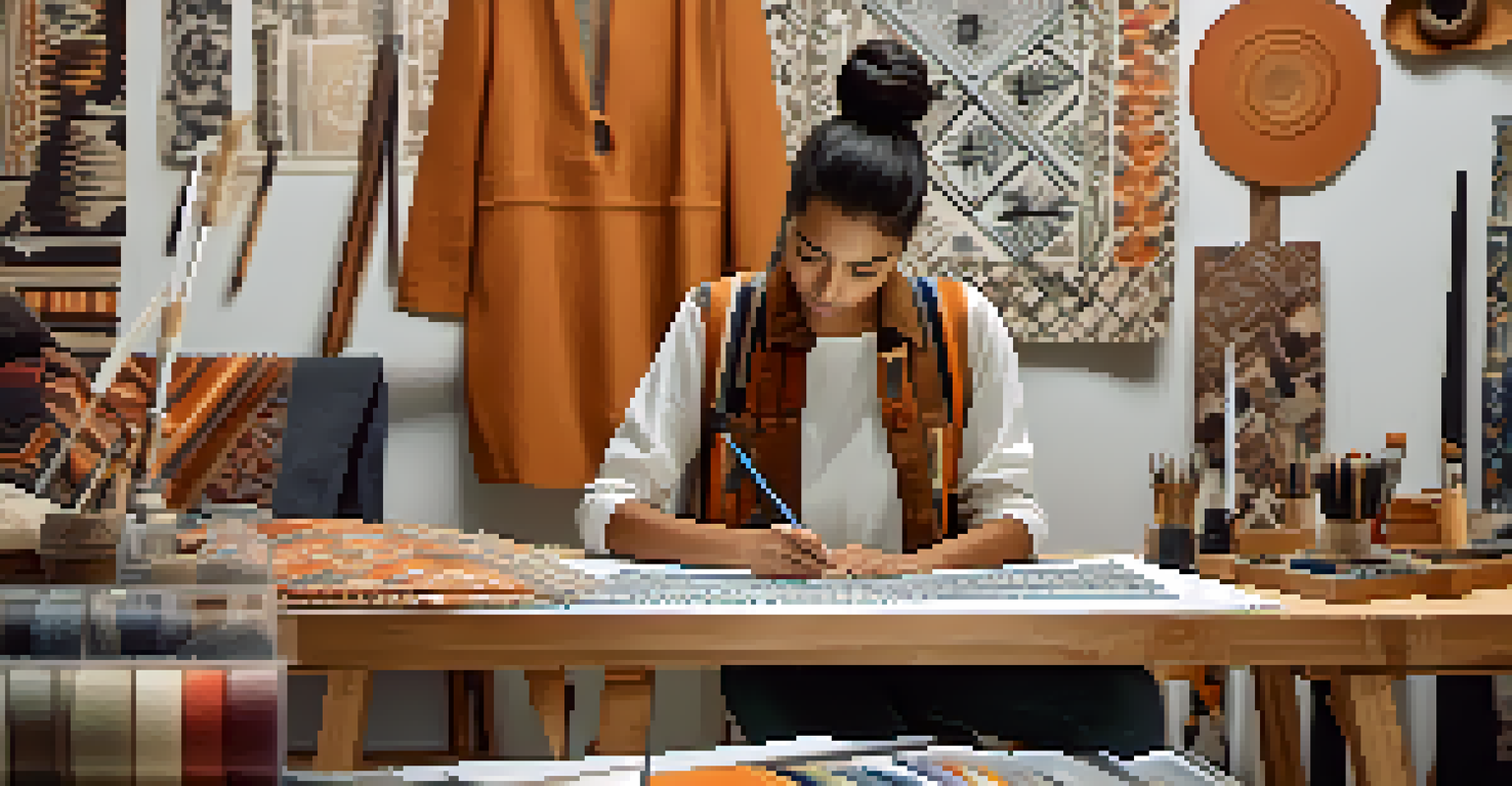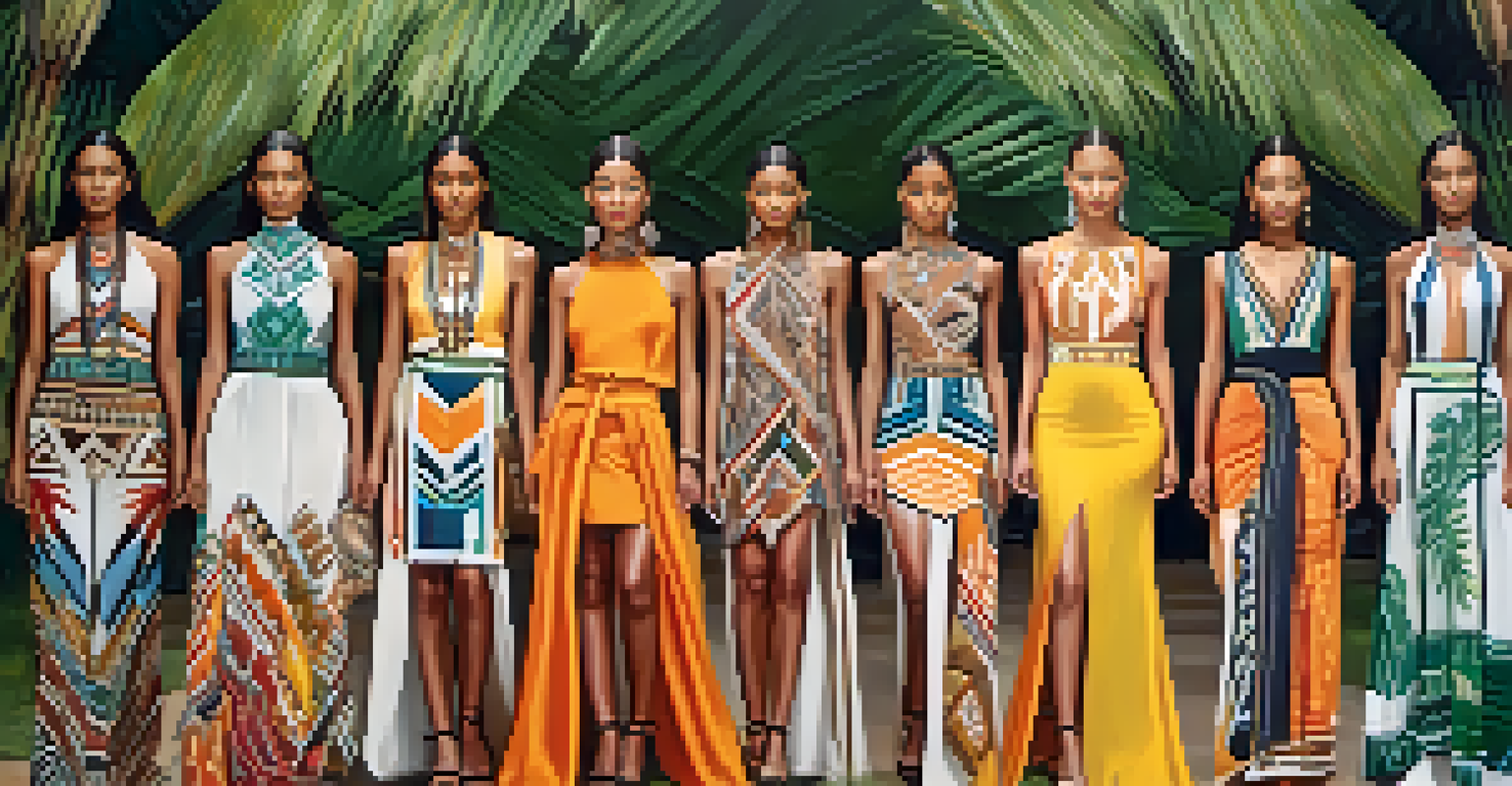The Influence of Indigenous Cultures on Global Fashion Trends

Understanding Indigenous Fashion: A Rich Tapestry of Culture
Indigenous fashion is not just about clothing; it's a vibrant expression of identity, history, and cultural narratives. Each piece often tells a story, reflecting the traditions, beliefs, and values of the community. From intricate beadwork to unique textiles, these elements form a rich tapestry that influences global fashion trends today.
Fashion is the armor to survive the reality of everyday life.
When we talk about Indigenous fashion, we are looking at a diverse array of styles and techniques, each unique to its culture. For instance, the vibrant patterns of Native American textiles can be seen in contemporary streetwear, bringing a piece of history to modern wardrobes. This interplay between tradition and modernity creates a dialogue that enriches the fashion landscape.
Moreover, Indigenous designers are now gaining recognition on global platforms, allowing them to showcase their cultural heritage. This visibility helps bridge the gap between Indigenous narratives and mainstream fashion, fostering a deeper appreciation for their artistic contributions.
The Global Impact of Indigenous Designs on High Fashion
High fashion has long looked to Indigenous cultures for inspiration, drawing from their unique aesthetics and techniques. Designers like Isabel Marant and Stella McCartney have incorporated Indigenous motifs into their collections, highlighting the beauty of these traditional designs. This not only elevates Indigenous artistry but also invites discussions about cultural appropriation and respect.

For example, the use of bold colors and geometric patterns found in traditional Indigenous garments can be seen in luxury brand collections. This trend showcases how Indigenous designs can transcend cultural boundaries, appealing to a global audience. However, it's essential to navigate this space with sensitivity and understanding, ensuring that the original cultures are honored.
Indigenous Fashion as Cultural Identity
Indigenous fashion serves as a vibrant expression of identity and cultural narratives, with each piece reflecting the community's traditions and values.
By incorporating Indigenous influences, high fashion brands can create a dialogue about sustainability and ethical practices. Many Indigenous communities prioritize eco-friendly methods and materials, offering valuable lessons for the fashion industry as it seeks to become more conscious of its environmental impact.
Cultural Appropriation vs. Appreciation in Fashion
The line between cultural appropriation and appreciation can often be blurry in the fashion world. Cultural appropriation occurs when elements of a culture are used without permission or understanding, often stripping away their significance. In contrast, cultural appreciation involves recognizing, respecting, and valuing the origins of these designs.
The future of fashion is about collaboration, celebration, and diversity.
When major fashion houses adopt Indigenous designs, it raises important questions about ownership and credit. Are these brands acknowledging the cultures that inspire them? Ensuring that Indigenous voices are included in the conversation is crucial to fostering genuine appreciation rather than appropriation.
This ongoing dialogue encourages consumers to be more mindful about the fashion choices they make. By supporting brands that collaborate with Indigenous designers or those that ethically source their inspiration, consumers can play a part in promoting respect and authenticity in fashion.
Sustainable Practices Rooted in Indigenous Wisdom
Many Indigenous cultures have long practiced sustainable living, valuing the earth and its resources. This deep connection to the land informs their fashion, utilizing natural materials and traditional techniques that minimize waste. As the global fashion industry grapples with its environmental impact, these practices offer valuable insights.
For instance, Indigenous artisans often use plant-based dyes and materials, creating beautiful garments that are both sustainable and culturally significant. This approach contrasts sharply with fast fashion, which is notorious for its waste and environmental degradation. By learning from Indigenous methods, the fashion industry can move towards more sustainable practices.
Navigating Cultural Appropriation
The distinction between cultural appropriation and appreciation is crucial, emphasizing the importance of recognizing and respecting the origins of Indigenous designs.
Furthermore, collaborations between Indigenous communities and fashion brands can lead to innovative solutions for sustainable fashion. These partnerships can empower Indigenous artisans while promoting eco-friendly practices, ultimately benefiting both the environment and cultural preservation.
The Role of Social Media in Promoting Indigenous Fashion
Social media has become a powerful tool for Indigenous designers to showcase their work and connect with a broader audience. Platforms like Instagram and TikTok allow them to share their stories, processes, and cultural significance behind their designs. This visibility helps to elevate Indigenous fashion in the global marketplace.
Through social media, designers can directly engage with consumers, bypassing traditional gatekeepers in the fashion industry. This democratization of fashion allows Indigenous voices to be heard and appreciated, fostering a sense of community and support. It also encourages consumers to learn about the cultural significance of what they wear.
Moreover, social media campaigns can raise awareness about the importance of ethical fashion, urging consumers to make informed choices. By following Indigenous designers and understanding their narratives, fashion enthusiasts can contribute to a more inclusive and respectful industry.
Celebrating Diversity: The Future of Fashion
The future of fashion lies in celebrating diversity and inclusivity, with Indigenous cultures playing a crucial role in this evolution. As the industry becomes more aware of its impact on various communities, there's a growing demand for authentic representation. This shift can lead to a richer, more vibrant fashion landscape that honors cultural diversity.
With Indigenous designers gaining more visibility, the opportunity for collaboration and innovation expands. By merging traditional techniques with contemporary styles, designers can create unique pieces that resonate with a global audience. This fusion not only preserves cultural heritage but also paves the way for new trends.
Empowering Communities Through Fashion
Supporting Indigenous designers provides economic opportunities and allows these communities to share their stories while promoting cultural heritage.
Ultimately, the influence of Indigenous cultures on global fashion trends highlights the importance of respect and appreciation. As the industry continues to evolve, embracing these values will lead to a more equitable and sustainable future for all.
Empowering Indigenous Communities through Fashion
Fashion can serve as a powerful platform for empowering Indigenous communities, providing them with economic opportunities and a means to share their stories. By supporting Indigenous designers and brands, consumers can help sustain these communities and promote their cultural heritage. This empowerment allows Indigenous voices to flourish in the global fashion narrative.
Furthermore, initiatives that focus on skill development and entrepreneurship can help Indigenous artisans thrive in the fashion industry. By offering training and resources, these programs enable artisans to create sustainable businesses that reflect their cultural identity. This not only benefits the individuals involved but also enriches the broader fashion community.

As more consumers seek out ethical and culturally significant fashion, the demand for Indigenous designs will continue to grow. This trend presents an opportunity for Indigenous communities to reclaim their narratives and traditions, ensuring their stories are told on their own terms.